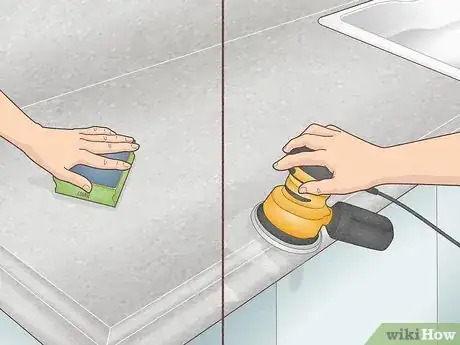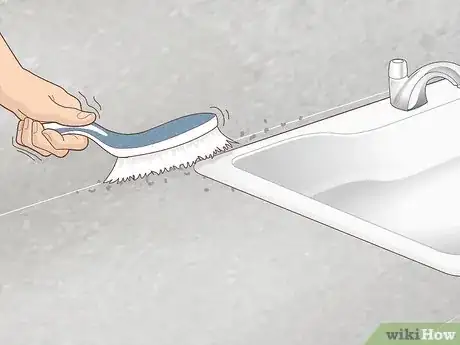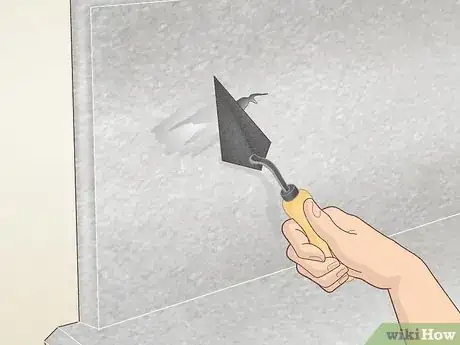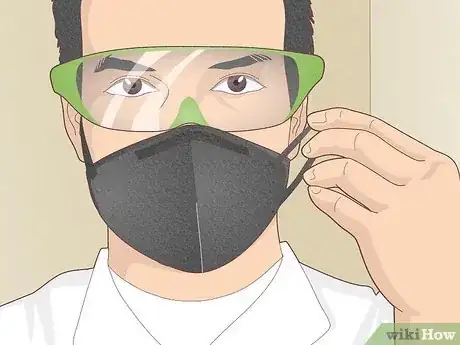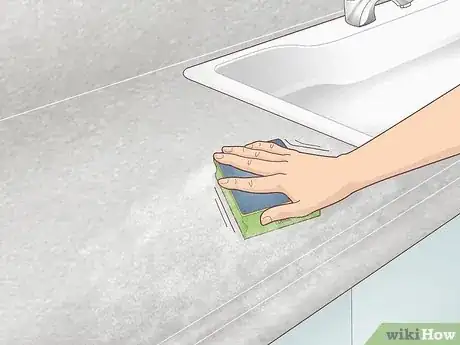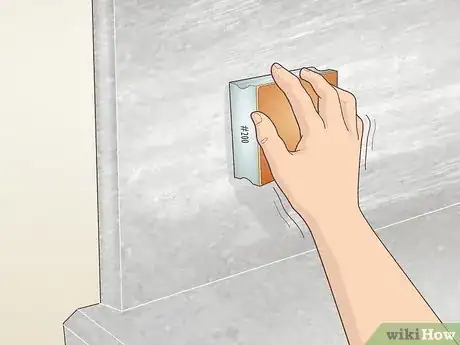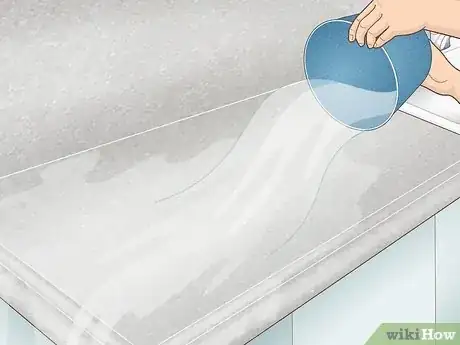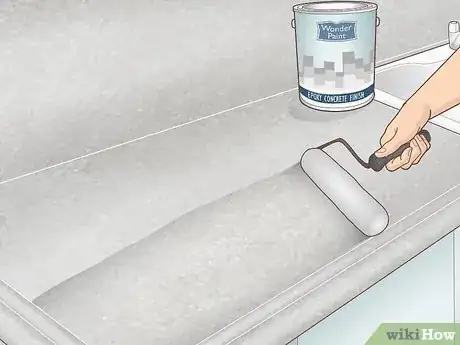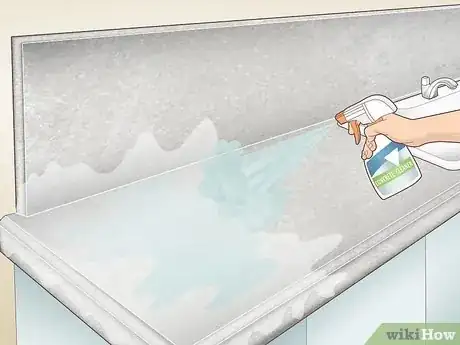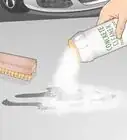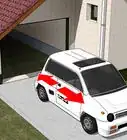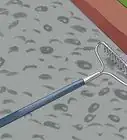This article was co-authored by Ryaan Tuttle and by wikiHow staff writer, Dan Hickey. Ryaan Tuttle is a Home Improvement Specialist and the CEO of Best Handyman, Inc. in Boston, Massachusetts. With over 17 years of experience, he specializes in building home service businesses, focusing on creating scalable and efficient brands. With the help of his global team, the companies have achieved over 10+ million in sales and received recognition through magazine features, and enjoy partnerships with wikiHow and Jobber field service software. Boston Magazine and LocalBest.com have named Best Handyman Boston the Best Handyman in Boston. Ryaan holds Construction Supervisor and Home Improvement Contractor Licenses.
There are 8 references cited in this article, which can be found at the bottom of the page.
This article has been viewed 8,793 times.
Sanding a concrete floor, wall, or countertop is a great way to make your concrete shine, but what’s the best way to do it? With the right tools and attention to cleanliness, sanding your concrete surfaces is a rewarding home improvement project you can show off to your visitors. We’ve put together a step-by-step guide to sanding concrete, including the exact materials you’ll need. If you’re ready to get sanding, read on!
Things You Should Know
- Dust, wash, and fill any holes or cracks in your concrete before sanding.
- Use an orbital sander or walk-behind sander with diamond sanding discs, or handheld diamond sanding pads.
- Sand the concrete at least 3 times, working from coarse to fine with coarse (60-grit), medium (120-grit), and fine (200-grit) pads.
- Dust or rinse your concrete between sandings and apply a concrete finish to preserve the surface.
Steps
Sand small areas by hand or use sanders for large surfaces.
-
Sand by hand for nuance or level very rough concrete with sanders. Sand by hand if your concrete surface is small, has artwork you’d like to preserve, or is already fairly smooth. You’re less likely to oversand this way, and it’s easier to sand tight spaces. For big, rough surfaces, use an electric tool:[1] X Research source
- Use a walk-behind sander for very large surfaces like floors or driveways. They are expensive to rent, but will make your sanding job go by much faster.
- Use a handheld orbital sander for areas like countertops, walls, concrete decor, or even floors.
- Sand wet or dry with any tool (electric or manual). Wet sanding extends the life of your pads but takes longer. Dry sanding is faster but makes more dust.
Purchase 60-, 120-, and 200-grit diamond sanding pads.
-
Diamond sanding pads are designed for hard surfaces like concrete. Purchase grits ranging from coarse to very fine. At minimum, get 1 coarse pad (30- to 60-grit) for a rough sand, 1 medium pad (80- to 120-grit) to remove imperfections, and 1 fine or ultra-fine pad (200- to 400-grit) for a final polish.[2] X Research source
- If you’re sanding by hand, use handheld diamond sanding bars.
- Use diamond sanding discs for sanders. They typically come in sets with a range of grits. Make sure to buy the correct size for your machine.
- Use discs meant for wet or dry sanding to match whichever style of sander you’re using.
Clean the concrete.
-
Clear away all dust, dirt, and grime from the concrete’s surface. First, vacuum or brush away loose debris (double check corners and edges). Then scrub the surface with liquid dish soap and water. Rinse away the soap residue with clean water and a sponge.[3] X Research source
- Let your concrete surface dry completely before taking further action. It may take several hours or overnight.
- When particles get trapped under a sander, they can scratch up the surface of your concrete and cause damage while you sand.
Fill any holes or cracks in the concrete.
-
Spread concrete patching slurry to fill holes and even the surface. Pick a slurry or patch similar in color to your cement so the filled cracks aren't visible. Spread the slurry over the concrete with a trowel, pressing firmly to eliminate air pockets. Smooth out the surface so it’s level with the concrete.[4] X Research source
- Let the slurry patch cure for 2 hours, then cover it with plastic. Sprinkle water under the plastic every day until the patch hardens (typically in 24-48 hours).
- It’s OK if you slightly overfill a hole. Any bumps that form when the slurry dries will be sanded away later.
Put on protective gear.
-
Wear goggles and a dust mask to protect against concrete dust. This keeps harmful substances from the concrete out of your eyes and lungs while you sand. Keep an industrial vacuum or shop vac on hand to clean up excess dust and reduce concrete inhalation, too.[5] X Research source
- Inhaling concrete dust can cause long-term respiratory problems and other health conditions.
- Protect furniture and other surfaces from sanding dust with tarps or cloths.
Do a rough sand with your coarsest (30- to 60-grit) pad.
-
Sand the entire surface area to eliminate the roughest bumps first. Whether you’re sanding by hand or with a machine, sand your concrete surface in sections with a coarse (30- to 60-grit) pad. Sand from the corners of your sections toward the center, keeping your sander level.[6] X Research source
- If your electric sander can’t reach a small spot or corner, use a handheld sanding pad to smooth it out.
- Use a long level to check that your concrete is evenly sanded before going to the next section. In small areas, set your sander down and look for gaps between the disc and the concrete.
- If you’re sanding by hand, stroke upwards against the coarseness of the sanding pad.[7] X Research source
- Dry sand for this first round to remove the roughest imperfections quickly. Wait until the second sanding or beyond to wet sand if preferred.
Dust or wipe down your concrete between sandings.
-
Dry sanding creates dust, and wet sanding creates a wet concrete slurry. After your first rough sanding, stop and wipe away all debris from the concrete. Use water and a clean rag or sponge to clean up wet sanding slurry. Vacuum or brush away dry dust.[8] X Research source
- Frequent cleaning gives you a fresh slate to sand, plus it reduces the risk of grinding hard debris into the surface.
- Some dry sanders have a vacuum attachment or dust compartment to catch concrete particles while you work.
Sand twice more with 120- and 200-grit pads.
-
Sanding with finer and finer pads creates an even, smooth finish. Follow the same strategy as before, working in sections across the entire surface area with your medium (80- to 120-grit) pad. When you’re done, clean the concrete again and sand once more with a fine pad (200- to 400-grit).[9] X Research source
- Repeat cleaning and sanding until you reach the desired smoothness, using finer sanding pads each time.
- There’s no specific number of times you need to sand the concrete—it all depends on how smooth you want it and how rough it was to begin with.
- If you’re wet sanding, pour water on the concrete (not the sanding pad) and sand over it. Use a consistent amount of water over each patch of concrete.
Dust and rinse the concrete after your final sand.
-
Clean your sanded concrete thoroughly to prepare it for sealing. First, brush or vacuum away dry dust and debris. Then rinse the concrete with clean water and wipe away the excess with a clean cloth. Let the concrete fully air dry (it can take as long as 2 days).[10] X Research source
Seal the surface with epoxy concrete finish.
-
Sealant will keep your concrete looking fresh and clean for years. Follow the instructions on the finish—typically, you’ll apply sealant to corners and edges with a paintbrush, then cover surfaces with a roller. Allow 1-2 days for the sealant to completely dry (the concrete may look darker or wet in the meantime).[11] X Research source
- If you’re sealing a concrete floor, make sure to start away from a door and work towards your exit so you’re not trapped.
- Ventilate the room or space as much as possible to avoid inhaling toxic fumes.
- For maximum safety and the best application, review all instructions about prepping the concrete and cleanup, too.
Use concrete cleaners to maintain your finish.
-
Even when sealed, sanded concrete is prone to stains. Clean up spills on sealed concrete as soon as possible using neutral cleaners or cleaners made for sealed concrete specifically. For general cleaning, remove loose debris with microfiber cloths and then mop or wipe concrete surfaces with clean, soapy water.[12] X Research source
Things You’ll Need
- An orbital sander or walk-behind sander
- Diamond sanding discs (one coarse, one medium, and one fine)
- Handheld diamond sanding pads (1 coarse, 1 medium, and 1 fine)
- A brush, broom, or mop
- Liquid dish soap and clean cloths or sponges
- Concrete patching slurry
- Trowel
- Safety goggles and a dust mask
- Shop vac
- Long level
- Epoxy concrete sealant
- Paintbrush and roller
You Might Also Like
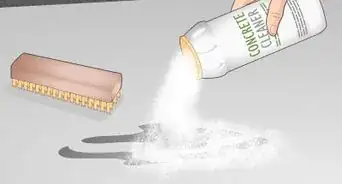 Best Ways to Remove Oil and Grease Stains from Your Driveway
Best Ways to Remove Oil and Grease Stains from Your Driveway
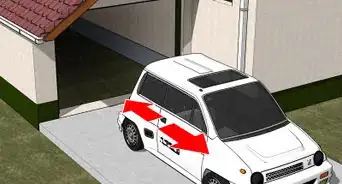
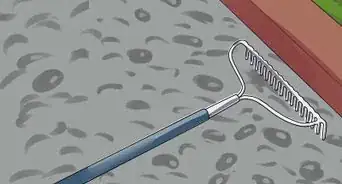
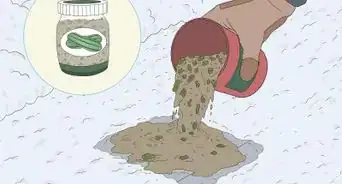

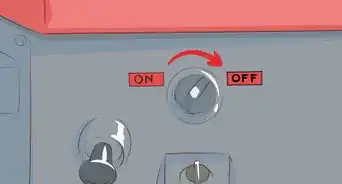
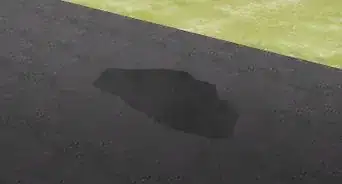
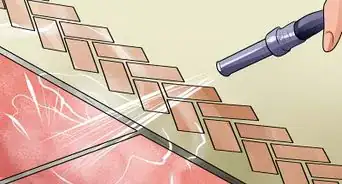
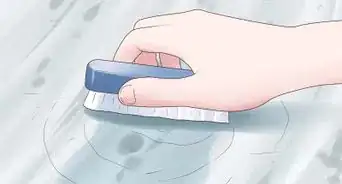
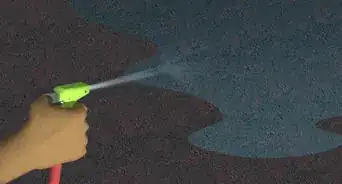

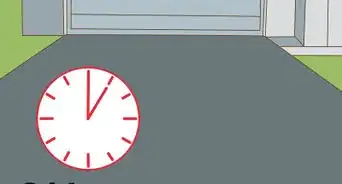
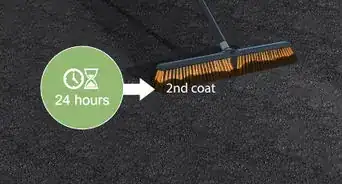
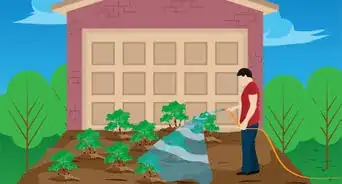
References
- ↑ https://www.homegoliath.com/how-to-sand-concrete/
- ↑ https://homedecorbliss.com/can-you-sand-concrete-walls/
- ↑ https://homesteady.com/13413815/how-to-sand-concrete-walls
- ↑ https://www.bobvila.com/articles/how-to-fix-cracks-in-concrete/
- ↑ https://www.homegoliath.com/how-to-sand-concrete/
- ↑ https://powertoolgenius.com/how-to-sand-concrete/
- ↑ https://powertoolgenius.com/how-to-sand-concrete/
- ↑ https://powertoolgenius.com/how-to-sand-concrete/
- ↑ https://powertoolgenius.com/how-to-sand-concrete/
About This Article

